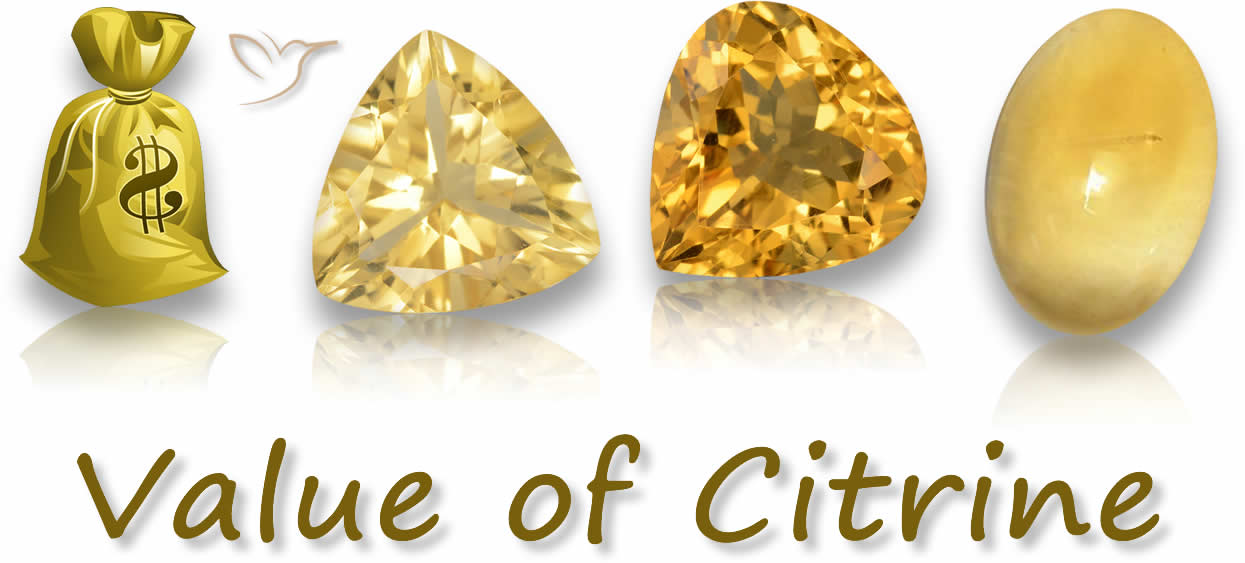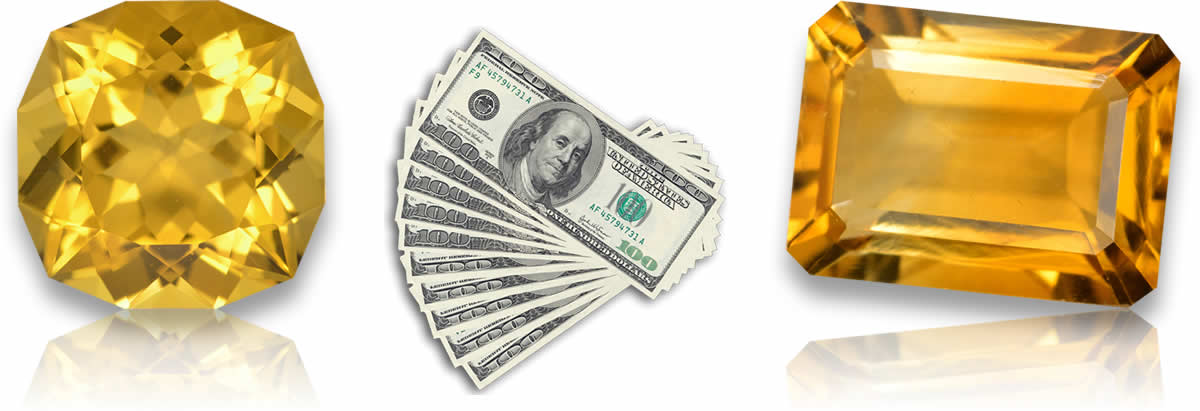How Much Is Citrine Worth Today? A Comprehensive Guide to Citrine Value

Citrine, with its sunny yellow to orange hues, is a gemstone that's both accessible and appealing in the gem market. Thanks to its reasonable prices and plentiful supply, it's a favorite for many. In this guide, we'll dive into the key elements that determine its market value today.
For more in-depth knowledge on this gem, explore our comprehensive citrine information resource.
Factors Affecting Citrine Value
Several aspects play into how much a citrine is worth. Let's break them down.
- Color: This is the top factor. The best citrines boast a rich amber or reddish-orange shade, like the prized Madeira variety. Deeper colors generally mean higher prices.
- Clarity: Clear stones with few inclusions are more desirable, especially for jewelry, which boosts their value.
- Cut and Carat Weight: A skilled cut highlights the stone's color and sparkle. While larger citrines over 5 carats are common, they still hold good value for bold jewelry designs.
Current Market Prices
Over the past ten years, citrine prices have remained fairly stable, with minor upticks for top-tier Madeira pieces. Based on recent data from 2025, here's a look at typical ranges.
| Carat Weight | Color Quality | Price Range (per carat) |
|---|---|---|
| 1-2 ct | High | $10 - $30 |
| 2-5 ct | Medium | $15 - $50 |
| 5+ ct | Low | $20 - $60 |
Keep in mind, natural untreated citrine can fetch higher prices, often starting around $40 per carat for quality pieces, while heat-treated ones might range from $4 to $12.
Top Citrine Varieties and Their Values
Madeira citrine, with its intense orange tones, tops the list and commands premium prices. Lighter shades provide budget-friendly alternatives without sacrificing much in terms of beauty.
Buying Tips for Citrine
If you're in the market for citrine, here are some practical pointers to help you make a smart choice. You know, it's always good to go in prepared.
To get even more expert advice, check out our full citrine buying guide.
- Assess the Color: Look for vibrant, saturated golden yellow or reddish-orange without any dullness or brown tints.
- Examine Clarity: Aim for stones with minimal visible inclusions to maximize brilliance.
- Consider the Cut: A quality cut should show even symmetry and proportions for the best light play.
- Size Matters: Bigger stones are available at reasonable prices since costs don't skyrocket with size.
- Treatment Disclosure: Inquire about heat treatments, which are standard but should be openly shared.
- Source Reputation: Stick with trusted sellers offering certifications and solid return policies for peace of mind.
- Price Comparison: Shop around to compare deals and ensure you're getting value for the stone's traits.
- Verify Authenticity: Make sure to learn how to tell if your citrine is genuine to protect your investment.

Comparison of Citrine with Yellow Sapphire and Yellow Diamond
Citrine, yellow sapphire, and yellow diamond each bring something different to the table in terms of looks, toughness, and cost. Here's a side-by-side view.
-
Color and Appearance:
- Citrine: Warm shades from light yellow to deep orange, perfect for affordable, sizable jewelry.
- Yellow Sapphire: Bright, uniform yellow with great shine; pricier than citrine but more accessible than diamonds.
- Yellow Diamond: Rare and costly, known for intense yellow and dazzling brilliance.
-
Hardness and Durability:
- Citrine: Rates 7 on the Mohs scale, fine for daily wear with some caution.
- Yellow Sapphire: Scores 9, making it highly durable for rings and everyday pieces.
- Yellow Diamond: Tops at 10, unbeatable for any jewelry type.
-
Price and Accessibility:
- Citrine: Most budget-friendly and widely available in various forms.
- Yellow Sapphire: Costs more, with prices depending on color depth and clarity - typically $40 to $900 per carat in 2025.
- Yellow Diamond: Far more expensive, starting around $3,000 per carat for fancy yellow, up to $16,000 for vivid.
-
Popular Uses:
- Citrine: Great for statement jewelry and casual wear.
- Yellow Sapphire: Ideal for upscale items like engagement rings.
- Yellow Diamond: Reserved for luxury and investment-grade pieces.
Price Comparison with Other Yellow Gemstones
| Gemstone | Average Price per Carat (2025) |
|---|---|
| Citrine | $5 - $50 |
| Yellow Sapphire | $40 - $900 |
| Yellow Diamond | $3,000 - $16,000 |
Frequently Asked Questions
What factors contribute to the price of citrine in the market?
The price of citrine is influenced by color, clarity, cut, and carat weight. Deep, saturated colors and fewer inclusions typically command higher prices.
How does the origin of citrine affect its value?
Citrine from renowned locations like Brazil may be more valued due to perceived quality and purity, though the impact on price can vary.
What is the most expensive type of citrine?
Madeira citrine due to its unique color.
How does citrine's value compare to other quartz gemstones?
Citrine is often more affordable than amethyst or smoky quartz with similar quality.
Is citrine considered a good investment compared to other gemstones?
Citrine is generally considered a more affordable gemstone, making it a popular choice for new collectors rather than a high-return investment.
What is the typical range of carat sizes available for citrine?
Citrine is available in a wide range of sizes, from small gemstones less than one carat to large decorative pieces over 20 carats.
Does the shape of citrine affect its price?
Yes, more intricate and labor-intensive cuts can increase the price of citrine compared to standard shapes like ovals and rounds.
How does citrine's price vary between rough and cut stones?
Rough citrine is generally less expensive than cut stones, which have added value due to the skill required to enhance their appearance and brilliance.
Can the presence of inclusions significantly lower the value of citrine?
Yes, visible inclusions can decrease the value of citrine, especially if they impact the gemstone's clarity and sparkle.
What types of jewelry settings are most common for citrine?
Citrine is commonly set in rings, pendants, and earrings, often in gold to complement its warm color.
How should citrine be cared for to maintain its value?
Citrine should be cleaned gently with mild soap and water, and protected from scratches and exposure to high heat, which can alter its color.
What are the most common treatments applied to citrine?
Heat treatment is the most common, used to enhance or change the color of citrine, often improving its market appeal and value.
Summary and Future Outlook
Citrine continues to be a go-to gem for collectors and jewelry lovers alike, thanks to its vibrant appeal and wallet-friendly prices. With consistent market trends and growing demand for natural stones, expect values to stay stable, possibly rising for standout specimens.

